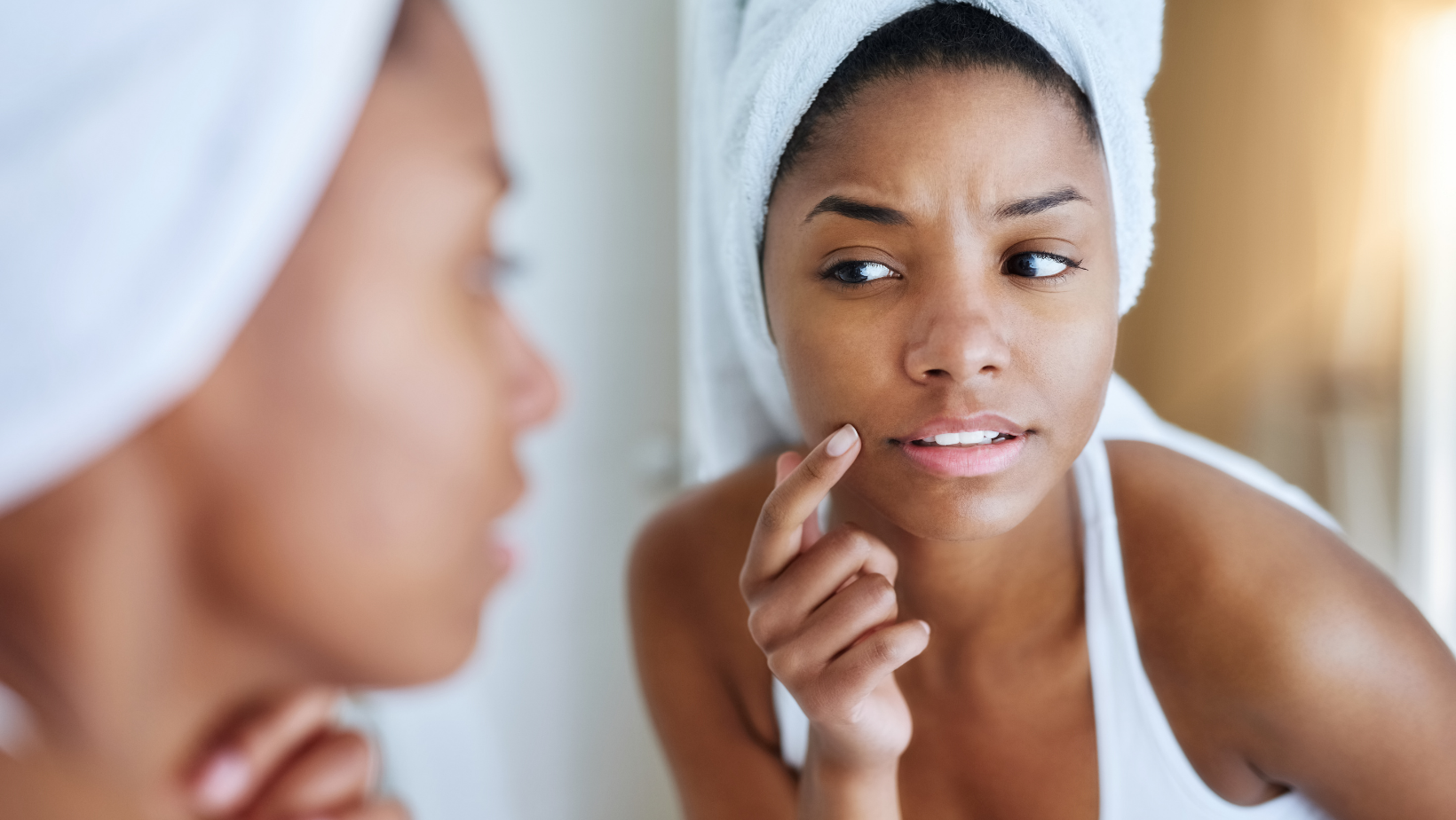Breakouts vs Purging

If you’ve never heard of purging in the context of skincare, it’s not as scary as it sounds.
Purging is a non-medical term generally used to describe breakouts that occur after starting a new skincare treatment or product containing certain active ingredients.
Our skin can tell us a lot of things. Whether it's thirsty for a face mask, craving some serum or dying for a drop of vitamin C, it's always communicating. But the real trick is knowing how to listen.
Everyone’s skin is unique, so that time frame can differ from person to person. Generally speaking, dermatologists say purging should be over within four to six weeks of starting a new skin care regimen.
Chances are you’ve experienced a ‘purge’ if you’ve ever noticed white or red pimples or more meteoric craters surface after introducing a new skincare product that contains ingredients designed to boost skin cell turnover. Some of the most common culprits for provoking a purge are also some of the most beneficial and powerful skincare actives out there, which is confusing, but we’ll come to that. For now, here are some common purging triggers:
❁Retinoids
❁Exfoliators, such as AHAS, BHAS and PHAS
❁Exfoliants - scrubs, cleansing brushes, peels and microdermabrasion treatments
❁Vitamin C
❁Benzoyl peroxide (a topical acne treatment)
❁Laser treatments
If you’ve used any of these methods before, you’ll be aware that many of the above are administered to clear up spots in the first place, so if they appear to be making breakouts worse, what gives?
The reason that certain treatments can trigger an initial breakout or “purge” is that they increase cell turnover. This means that they help us to shed our dead skin cells more effectively in the long run so that they don’t build up and clog our pores. In the shorter term, however, this accelerated shedding, or exfoliation, of dead skin cells may trigger more blackheads or breakouts.
Want to incorporate new products into your routine but don’t want to deal with a full-on purging process? Start slow. Gradually incorporate active ingredients, such as acid exfoliants, into a routine that gives your skin time to adjust without experiencing a noticeable purge or reaction. The best way to start with a product is to use it two times a week then increase to three or four times over the course of a month until you’re using a product daily or as directed.
Signs that your skin is purging
All spots are essentially caused by the same process. The sebaceous glands in the skin produce too much oil or sebum. This mixes with dead skin cells and gets trapped in our pores. The bacteria that cause spots thrives on this material and activates our immune systems, triggering a cascade of inflammation that results in blemishes.
So it’s kind of a short term pain, long term gain situation whereby spots that would have weaselled their way to the skin’s surface anyway have popped up prematurely. Purging should only last for around a month, while you should start to see the benefits of a using new treatment at around the three month mark, or even earlier, depending on the treatment in question.
Can you prevent purging?
Not exactly, but you can reduce the ferocity of flare-ups by introducing new products containing active ingredients slowly and choosing lower strength products to begin with before gradually building to higher potencies once you’re skin has adapted. Keeping your skin barrier strong and healthy will help matters, as will ensuring you always use an SPF between 30 and 50 during the day and opting for gentle, anti-inflammatory skincare to offset any aftereffects of punchy active ingredients.
By keeping it simple you'll save your skin a lot of struggle. If you’re using several products and applying them all at the same time, try applying them at different times (for example, apply one product in the morning, the other at night) or try switching to products with lighter textures (go from a cream to a lotion or gel), which often makes a world of difference.
How long does it take for skin to purge?
An average skin cycle lasts around 28 days, so consider going through at least one full cycle to shed dead skin cells and get through most of the purging process before changing anything in a routine. As they say, Staying consistent with a routine is one of the best things you can do for your skin when starting with new, active ingredients. Consistency is key!
Here are some characteristics to watch for when determining whether your skin is purging or you’re in fact experiencing a reaction-type breakout:
❁Purging – Located predominantly in a defined area where you already have frequent breakouts. Skin purging also clears up much faster than a pimple or reaction.
❁Reaction-Based Breakout – You’re getting breakouts in new areas where you don’t often get pimples. The timeline from development to breakout and subsequent healing runs about a week.
For most skin types, using acid exfoliants for the first time could lead to some level of dryness and redness in the beginning – especially if used too frequently at first. If you’re using products outside of this category, such as serums, toner or moisturisers that don’t contain active ingredients, and find your skin gets irritated or breaks out, your issue could be a sensitivity to a particular ingredient.
What to do if your skin is purging
Refrain From Picking At Any Bumps Or Small Pimples
As tempting as it might be, leave your skin alone to prevent further inflammation, acne or discoloration.
Don’t Add Products That Dry Skin Out In A Routine
When using active ingredients or exfoliants, avoid anything that will cause dryness. For some, the purging process includes eliminating excess sebum or oil, so you don’t want to over- exfoliate and cause dry, red skin.
Medically reviewed by DR AI NHI BUI & DR JOSEPH SANTOS


